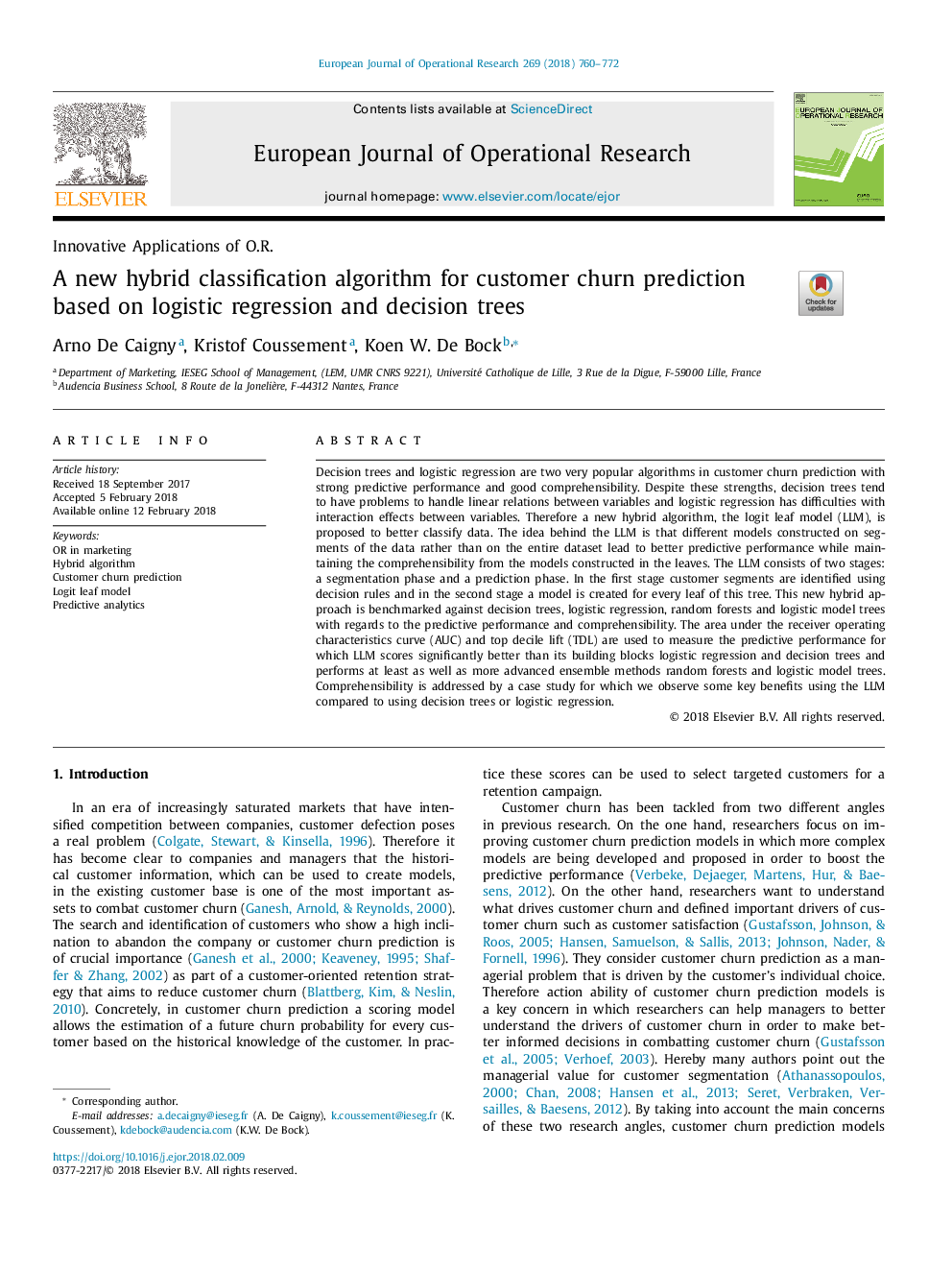| Article ID | Journal | Published Year | Pages | File Type |
|---|---|---|---|---|
| 6894743 | European Journal of Operational Research | 2018 | 13 Pages |
Abstract
Decision trees and logistic regression are two very popular algorithms in customer churn prediction with strong predictive performance and good comprehensibility. Despite these strengths, decision trees tend to have problems to handle linear relations between variables and logistic regression has difficulties with interaction effects between variables. Therefore a new hybrid algorithm, the logit leaf model (LLM), is proposed to better classify data. The idea behind the LLM is that different models constructed on segments of the data rather than on the entire dataset lead to better predictive performance while maintaining the comprehensibility from the models constructed in the leaves. The LLM consists of two stages: a segmentation phase and a prediction phase. In the first stage customer segments are identified using decision rules and in the second stage a model is created for every leaf of this tree. This new hybrid approach is benchmarked against decision trees, logistic regression, random forests and logistic model trees with regards to the predictive performance and comprehensibility. The area under the receiver operating characteristics curve (AUC) and top decile lift (TDL) are used to measure the predictive performance for which LLM scores significantly better than its building blocks logistic regression and decision trees and performs at least as well as more advanced ensemble methods random forests and logistic model trees. Comprehensibility is addressed by a case study for which we observe some key benefits using the LLM compared to using decision trees or logistic regression.
Related Topics
Physical Sciences and Engineering
Computer Science
Computer Science (General)
Authors
Arno De Caigny, Kristof Coussement, Koen W. De Bock,
